Software Development Life Cycle | What is SDLC?
Software Development Life Cycle (SDLC) is a process of developing software. This article discusses the concept in detail, and provides an overview of what it entails.
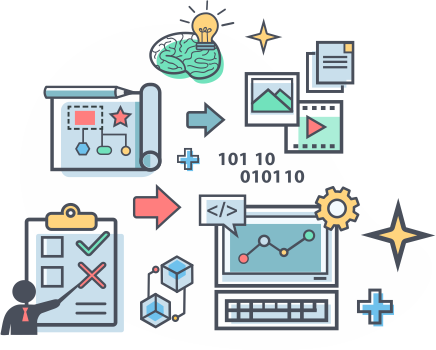
Software Development Life Cycle | What is SDLC?
Software Development Life Cycle (SDLC) is a process of developing software. This article discusses the concept in detail, and provides an overview of what it entails.
In this comprehensive guide, you’ll learn all about
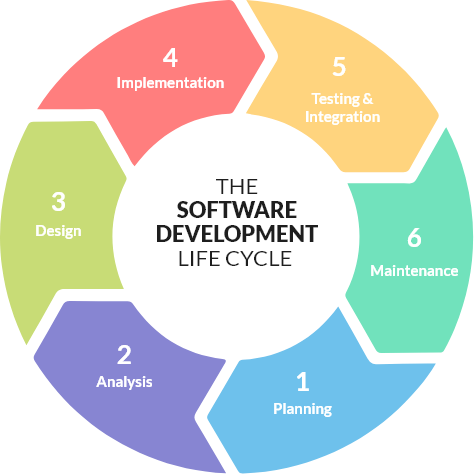
What is SDLC?
SDLC or Software Development Life Cycle is the framework methodology to develop high quality, effective and efficient software, and deploy in the shortest time possible. SDLC framework involves predefined processes, phases, and each stage of the SDLC phase produces the deliverables required for the next phase in the lifecycle.
A typical software development life cycle consists of the following phases
- Requirement Phase
- Analysis & Planning Phase
- Design Phase
- Development & Implementation Phase
- Testing Phase
- Deployment & Maintenance Phase
Why Use the Software Development Life Cycle?
Software development is an extremely important part of any business that creates, designs, or maintains software. Software-created products such as video games, word processors and computer programs have become so complex these days that they require a structured process to be developed in the right way. That’s where the Software Development Life Cycle comes into play. This complete guide will help you understand what it is and how it can help your business succeed!
The software development life cycle helps in achieving these cut through advantages.
- Delivers high-quality software which meets the user requirements
- Strong management control over the project
- Helps in robust workflow scheduling and achieving deadlines
- Maximize productivity
- Cost-effective methodology
How SDLC works?
SDLC works by evaluating existing client system deficiencies and identifies the requirements of the new system by following the life cycle phases. Even after the deployment of the software onto the client environment, user issues, and any additional improvements that surface, can become a requirement for the next cycle.
The software development life cycle is a continuous improvement model.
SDLC Phases and Best Practices
This entire Software Development Life Cycle (SDLC) can be mapped out using six key phases: Requirement Phase, Analysis & Planning Phase, Design Phase, Development & Implementation Phase, Testing Phase and Deployment & Maintenance Phase. Here are the details:
1. Requirement Phase
This is the first phase of Software Development Life Cycle, and it entails gathering requirements for the software. Requirement gathering and analysis is the most critical phase of SDLC.
In the requirement phase, the business analyst collects the requirement from the client and other stakeholders as per the business needs and document them in Business Requirement Specification (BSR) document.
The most common steps involved in the requirement phase of SDLC are
- Understanding client requirements
- Constructing process flow charts
Pro Tip: Document name might vary depending upon the organization. For example, Customer Requirement Specification (CRS), Business Specification (BS), and more.
2. Analysis & Planning Phase
The next step in the SDLC process is to define and document product requirements and get them approved by the client and other stakeholders. This document is known as the Software Requirement Specification (SRS) document.
Software Requirement Specifications (SRS) consists of all the product requirements to be designed and developed during the software development lifecycle.
The most common steps involved in the analysis and planning phase are
- Drafting a project plan
- Evaluation and identification of resources
- Feasibility assessment
Pro Tip: Key people involved in this phase are Project Manager, Business Analyst, and Senior stakeholders.
3. Design Phase
The design phase in the Software development life cycle involves two functional steps.
- High-Level Design (HLD) provides the architecture of the software product. Software architects and senior developers develop this design.
- Low-Level Design (LLD) explains the functioning of every feature and component in the product and its working.
The outcome of this phase is documented as High-Level & Low-Level documents.
Pro Tip: HLD & LLD documents will only provide the design element, not the code.
4. Development & Implementation Phase
Development & implementation phase is where the software developers start writing the code for the product, the operations team will set up the physical hardware for the servers, and the designers will program the user interface. The coding phase is the process of translating the design into a working software product.
The two significant steps in this phase are
- Setting up IT infrastructure
- Building codebase for the software
Pro Tip: Outcome from this phase are Source Code Document & developed product.
5. Testing Phase
Back in the development & implementation phase, servers, databases, and applications are setup. Now in the testing phase, the ready software is passed on to the testing team.
Testing and QA (Quality Assurance) team validates whether all of the requirements have been met, reassures all the functionality is working as expected and identify all the possible bugs and report them to bug tracking system. The bugs are then assigned to the developers and rectified. This process is also known as Bug Lifecycle.
Two significant activities involved in this phase are
- Coding test cases and
- Execution of test cases
The outcome of this phase is the quality product and the testing artifacts.
Pro Tip: Software testing is crucial in the software development lifecycle.
6. Deployment & Maintenance Phase
In the deployment phase, the operations team will end up nearing the staging or developing environment systems, and get it ready for production.
The implementation team will install new hardware, servers, and have everything scalable for production. This includes setting up the links, databases for real-time users, and syncing up with development teams and release managers.
After setting up the production unit, the application will go live to real users, and where the application is available to be downloaded by millions of users.
This brings us to the maintenance phase, where the maintenance team will regularly examine the application, monitor the load on the servers, and more. The maintenance team will support the application in all circumstances and further update and enhance the software to match the real-world client scenarios.
Pro Tip: Client & software development vendor should mutually agree and sign the Service Level Agreement (SLA).
Types of SDLC Models
After reading this section and understanding each model, and its advantages and disadvantages, you will be in a better position to choose which SDLC model best suits your project context.
Let’s explore the popular SDLC models that are industry proven frameworks for exceptional software development experience.
- Waterfall Model
- V-Shaped Model
- Prototype Model
- Iterative/Incremental Model
- Spiral Model
- Agile Model
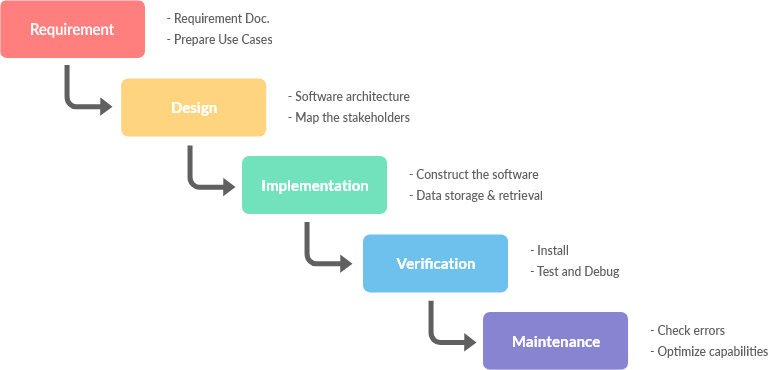
Waterfall Model
The waterfall model is the earliest approach to software development. The waterfall model is a linear sequential approach to software development.
In this model, the sequential progress is seen as flowing steadily downwards, like an actual waterfall. And, therefore, its named Waterfall model. This model is straightforward to understand and use. In the waterfall model, each phase must be completed fully before beginning the next phase. In this model, testing starts after software development is completed.
Pro Tip: The Waterfall model is the best fit for small projects which have clear requirements.

V-Shaped Model
V-Shaped Model or V-Model is an extension of the waterfall model. In this SDLC model, software development happens sequentially in a V-Shape. It is also known as Verification and Validation Models.
Each phase of the V-model will be completed before the next phase begins.
In V-Model, the testing of the product is done in parallel with the corresponding development phases. Testing activities like planning, test designing are initiated well before the coding. In the V-Shaped model, every phase in the development life cycle will be directly associated with the different testing phases.
Pro Tip: V-Shaped model saves much more time and hence a higher chance of success as compared to the Waterfall model.

Prototype Model
The prototype model is the working model of software with limited functionalities. In this model, developers build a working prototype of the actual product with the most favorable functions provided by the client.
Once the prototype is ready, it is handed over to the client for assessment. After the client feedback, new deadlines and milestones are defined by the developers. This will reduce multiple iterations when compared to other models.
Pro Tip: Prototype model reduces the overall risk by dividing the project into smaller segments and provides flexibility in the development process.
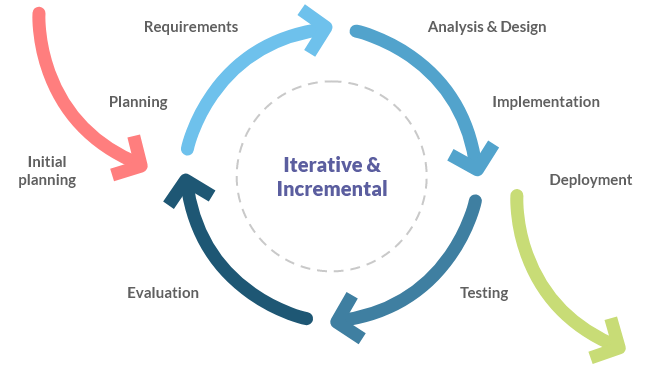
Iterative/Incremental Model
The iterative or Incremental life cycle model starts with the simple implementation of a small set of software requirements and incrementally enhances the software until the complete system is implemented and is ready to be deployed.
The iterative model does not start with the entire client specifications. Instead, software development kicks off with a subset of the requirement and improved incrementally with multiple iterations before developing the final product.
The fundamental idea behind this method is to develop a software product through repeated cycles (Iterative) and in portions (Incremental).
Pro Tip: The Iterative/Incremental Model is a good fit for large-scale projects.
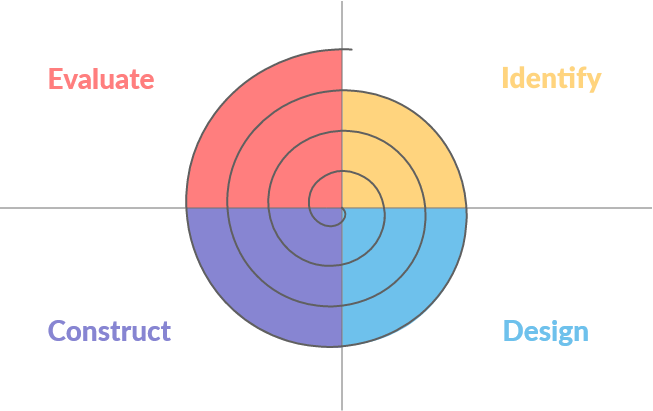
Spiral Model
The spiral model is a combination of iterative model and waterfall model. This model considers risks, which often goes unnoticed by most other models.
The spiral model starts with determining the objectives and constraints of the software at the start of the iteration. The next phase in the spiral model is to prototype the software, and this includes a high emphasis on risk analysis. The spiral model allows incremental release & refinement of the product through each iteration.
Pro Tip: Spiral Model is suitable for large applications and systems which are built-in segments.
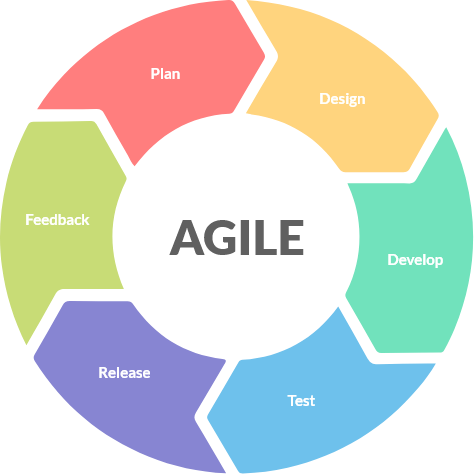
Agile Model
Agile is a software development methodology which is actually a philosophy to rapidly deploy an application in a much more organized way.
In simple terms, agile is nothing but a chain of rapid development and deployment.
The agile model helps build software incrementally using short iterations by breaking the application into small chunks of code by following the microservices model to align with the changing business needs.
Instead of a single pass development of 6 to 18 months where all requirements and risks are predicted upfront, agile adapts for frequent feedback by delivering workable product after every iteration.
In an agile model, iterations are termed as sprints. And, each sprint lasts for 1 to 4 weeks.
After each sprint is completed, the product manager verifies the updated product and deploys it in the client environment. Post-deployment, customer feedback is collated, and the product is enhanced in the follow-up sprint.
Pro Tip: The end result of the agile model is a very high-quality product in the least possible time.
Agile Vs. Traditional Models
The four fundamental value principles that differentiate and justify why anyone should consider agile methodology.
- People over processes and tools
- Working software over comprehensive documentation
- Customer collaboration over rigid contracts
- Responding to change rather than following a plan
Pro Tip: The agile model fits in any type of project, but it requires more customer engagement.
How to implement an agile model?
The agile SDLC model has multiple implementation frameworks or philosophies to deliver the finest quality of software. The frameworks are more or less very similar, but from an implementation standpoint, each of the frameworks has its unique practices.
In this section, we will take a look at the top three agile implementation framework and how unique their practices are
- Scrum
- Kanban
- Extreme Programming (XP)
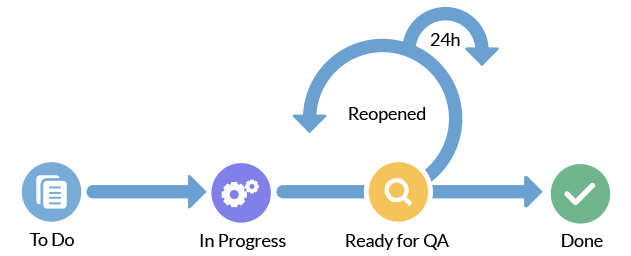
Scrum
Scrum implementation framework is an agile management method to help small teams work interdependently.
Scrum framework starts with planning a minimal feature set, build what was planned, and then test and review that small feature set, and get it ready to ship. At the end of this cycle, a useful piece of the product is ready. This entire process is called sprint, and it generally occurs in 1 to 3 weeks period for delivering a working part of the overall product.
Scrum Workflow
Let’s bring it all together and take a look at the scrum workflow.
- At first, the product owner creates a list of bright ideas that could go into the product and prioritizes the ideas to draft a product backlog.
- The product owner, scrum master, and the team together select the top priorities from the product backlog and adds them to the sprint backlog for implementation.
- A sprint is a 1 to 3 weeks’ time box to complete the sprint backlogs, and during this period team meets each day for a “daily scrum” to assess their progress.
- The outcome of the sprint is a potentially shippable product and can be deployed in a client environment if the product owner is satisfied.
- At the end of each sprint, a sprint review and sprint retrospective meeting occur. In the sprint review, the product is showcased to the client or product owner for feedback, and a retrospective meeting is an internal team meeting to improve the overall process.
Pro Tip: Several sprints are repeated until the product is feature complete.
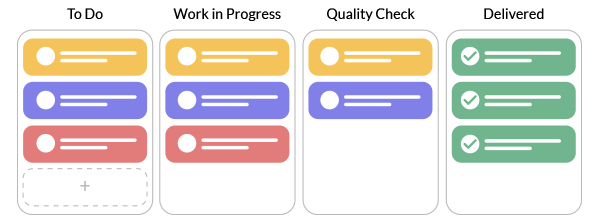
Kanban
Kanban is a Japanese word meaning “signboard” or “billboard” is a simple yet powerful agile implementation framework to help business owners and project managers stay organized.
A well-planned Kanban board helps team members in collaborating and being informed. In many cases, a digital Kanban system, along with thoughtful participation, can eliminate the need for the dreaded weekly status report.
In the Kanban framework, after a board is created, all the necessary contributors are invited to participate on the board. It helps to create a small but dynamic working group. In most cases, board participation includes one or more product owners.
Pro Tip: In a small company, the product owner might be the business owner, and in a large organization, it might be a project manager.
Kanban Workflow
In its most basic form, a typical Kanban board has just a few columns such as
- Backlog
- To-do
- In progress, and
- Completed
Now, let’s bring it all together and understand the scrum implementation workflow.
- The product manager maintains an authoritative list of work items that need to be accomplished to complete a project.
- Work items are represented on the board with tasks or cards or user stories describing the task in sequential bit-sized thoughts.
- Kanban board contains a backlog column to sort and prioritize the list of tasks. The backlog can even contain brainstorming cards.
- Tasks are assigned to team members, and the product owner moves the tasks from the backlog to the to-do column. The first card is the most crucial task and is prioritized first.
- Team members can add notes, change ownership, and even invite others to participate. It helps everyone on the board know the progress and the exact status of the project.
- Similarly, a visual workflow is created from concept to deployment.
Pro Tip: Decrease WIP (Work in Progress) in order to decrease cycle time (Delivery rate)
Delivery Rate = Work in Progress/Lead Time
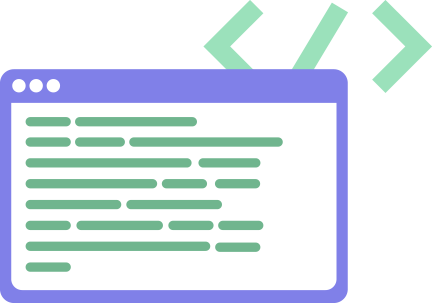
Extreme Programming (XP)
Extreme Programming is a lightweight, low risk, flexible, predictable, humanistic, and fun way of software development.
XP is known to be a lightweight, agile implementation framework because it doesn’t overburden the developers with an invasive process. Instead, it is kept to the minimum. And, humanistic as it is highly centered on developers, customers, and other stakeholders.
The extreme programming framework relies on creativity, learning and improving through trial and error, and continuous iterations with multiple feedback loops.
Pro Tip: XP agile philosophy addresses the vague and changing requirements by smaller teams.
Extreme Programming Workflow
Let’s explore how to implement XP agile implementation framework step by step.
- XP starts with a simple design to code the features at hand and, meanwhile, flexible to redesigning when required.
- Development is done in pairs, with two programmers at one system, taking a turn to code while the other always reviews and provides feedback.
- Integration and testing are done multiple times in a day.
- A minimal working product is put together quickly for production and upgraded continuously.
- The customer is involved throughout the implementation phase to validate and iterate from constant feedback.
Pro Tip: XP framework is the best fit for projects with strict deadlines.
Final word
The choice of the SDLC model for the successful completion of any project depends on the thorough understanding of the client requirement.
Each of the SDLC models has its own merits and demerits.
The most critical factors that project managers should focus on defining the success of an SDLC model are to examine
- Whether the requirements are clear or unclear
- The complexity of the project
- Size & resource requirements
In case the project is large with precise and static requirements, then the Waterfall model is the best fit.
On the contrary, if the project requirements are dynamic and require much higher involvement of testers from the start of the project, then V-Model would be appropriate.
And, if the requirements are unclear and dynamic, and expected to deploy in a short period, then Spiral and Agile models fit in flawlessly.
That’s pretty much all on what you need to know for a successful software development roadmap.
Software Development Help
DO YOU WANT TO CONTROL DIGITALLY?
CONTACT US
